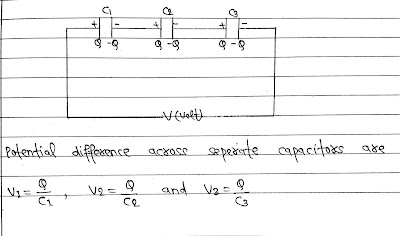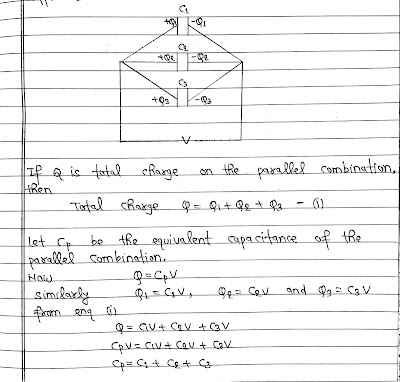Chapter-2|Electrostatic Potential and Capacitance| NCERT 12th Physics:
Combination of Capacitors:
When there is a combination of capacitors in a circuit, we can sometime replace that combination with an equivalent capacitor.
The two basic combinations of capacitors which can be replaced by single equivalent capacitor, are
Capacitors in Series:
When negative plate of one capacitor is connected to the positive plate of the second, and the negative of the second to be positive of the third and so on, the capacitors are said to be connected in series.
When a potential difference (V) is applied across several capacitors connected in series, sum of potential differences across all the capacitors is equal to the applied potential difference V.
Potential difference across the series combination
The equivalent capacitance of n capacitors connected in series is equal to the sum of the reciprocals of individual capacitances of the capacitors.





